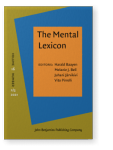Vol. 16:2/3 (2021) ► pp.325–361
Phonological similarity effects in cross-script word processing
Evidence from Sino-Korean word processing by Cantonese learners
The present study explored the conditions under which phonological similarity effects arise without orthographic confounds by testing languages with true cognates but divergent scripts. We investigated the similarities and differences between within- and cross-script processing patterns by providing data from an understudied language pair, Korean and Cantonese, which have many cognates but bear no orthographic resemblance. In two word-naming and translation tasks, beginning and intermediate Cantonese-speaking learners of Korean (N = 112) were tested for the processing speed of Sino-Korean words. The results of the word-naming experiments showed that phonologically similar words were processed faster than dissimilar ones, regardless of L2 fluency, especially when the logographic L1 characters were used as primes. However, facilitation by shared phonology was not observed in the translation experiments in either direction. L1-to-L2 forward translation was much faster than L2-to-L1 backward translation, indicating conceptual memory being used as a primary processing pathway. The characteristics of cross-script processing patterns were discussed in terms of the structure of bilingual memory.
Article outline
- Introduction
- Cross-script word-processing: Findings and limitations
- Strictly cross-script processing: Cantonese and Sino-Korean words
- Phonological facilitation by logographic L1 orthography
- Facilitation by shared phonology across experimental paradigms
- Experiment 1. Explicit word-naming
- Method
- Participants
- Materials
- Procedure
- Data analyses
- Results
- Discussion
- Method
- Experiment 2. Word-naming with masked primes
- Method
- Participants
- Materials
- Procedure
- Data analyses
- Results
- Discussion
- Method
- Experiment 3. Translation
- Method
- Participants
- Materials
- Procedure
- Data analyses
- Results
- Discussion
- Method
- General discussion
- The phonological similarity effect in cross-script word processing: When and how it arises
- Phonological facilitation by L1 characters in cross-script processing
- Conclusion
- Acknowledgements
- Notes
- Ethics clearance
-
References
